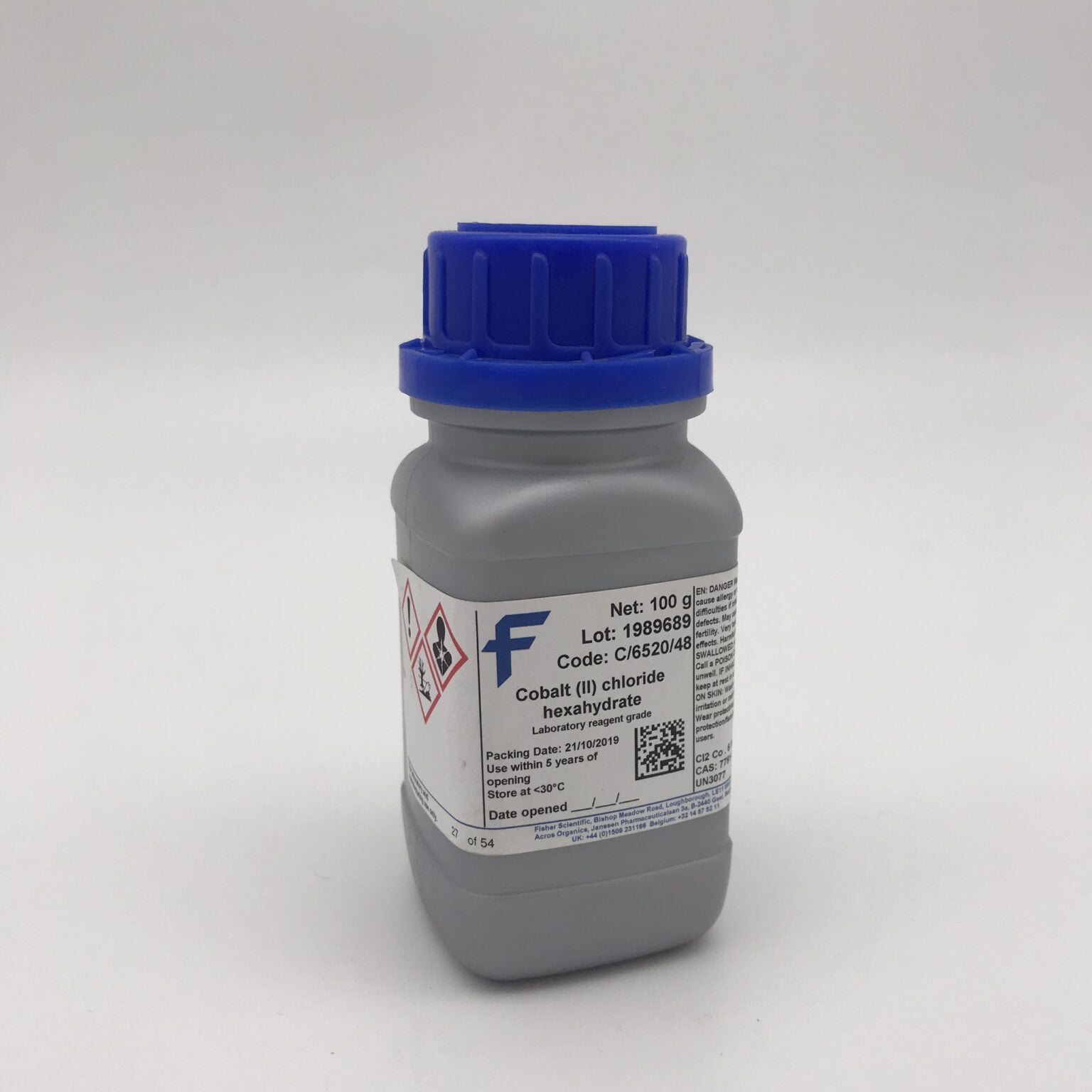


Warning! Substances of this experiment are toxic and highly dangerous for your health. The cobalt solution is carcinogenic - in the case of contact with skin, wash it away with water. When carrying out the experiment, wear gloves and protective glasses. This is because the chlorine ions force the water out of the water complex of cobalt. Adding concentrated hydrochloric acid to the solution changes the color of the solution to bluish-purple. Cobalt ions are hydrated in the solution and have a pink color. The cobalt chloride changes color because the salt in the solution dissociates into ions. If you add water to the bluish-purple solution, it will become pink again, while if you add concentrated hydrochloric acid to the second solution, it will become bluish-purple. Pour distilled water into one glass, and concentrated hydrochloric acid into the second – the color of the solution will change to bluish-purple. Understanding: A solution of cobalt (II)chloride is a lovely pink color.

Add water to the solution and observe transformation in color of solution. Add hydrochloric acid to the solution and observe change in color. Pour the obtained solution into two glasses. Prepare a solution of cobalt chloride in 98 ethyl alcohol. This classic Le Châtelier’s Principle lab explores the reversible chemical reaction: Students experiment with shifting the equilibrium and observing the colour change by. When reactants predominate, the solution looks pink and when products predominate, the solution looks blue. Dissolve 10 g of cobalt chloride (II) in 100 ml of water. The blue colour is the result of cobalt chloride complex ions (CoCl 42) in less dense acetone.


 0 kommentar(er)
0 kommentar(er)
